Are you passionate about photography and looking for ways to monetize your skills? Selling pictures online is a viable path to generate income, whether you’re a seasoned professional or just starting out. Numerous platforms cater to photographers wanting to license their work as stock images and connect with buyers seeking high-quality visuals for commercial purposes.
Stock photo websites act as intermediaries, connecting photographers with brands, agencies, and individuals needing images for various projects. These platforms handle the licensing and distribution, giving you a percentage of the revenue generated from your photos.
This guide explores 15 of the top websites for selling your photos online. We’ll also provide a step-by-step roadmap to transform your photography into a successful online business.
Top Platforms for Selling Photos Online
1. Alamy
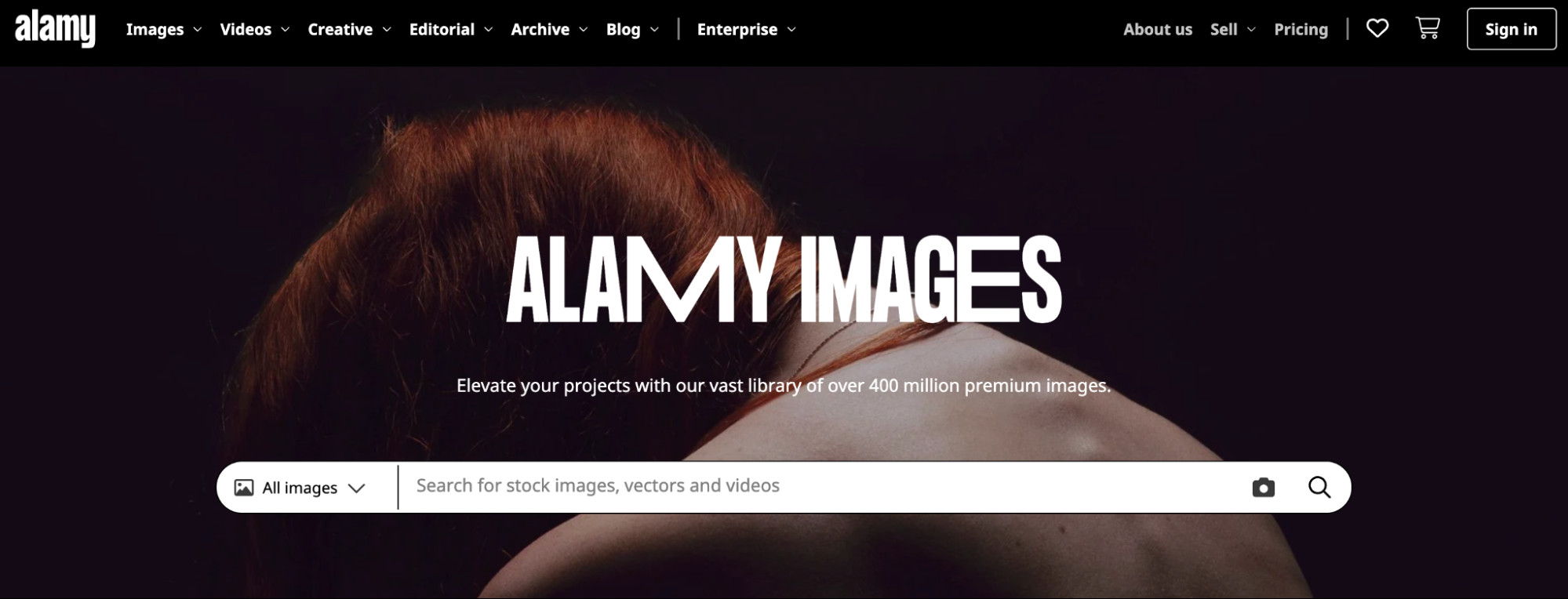 Alamy homepage showing a search bar for royalty-free images.
Alamy homepage showing a search bar for royalty-free images.
Alamy boasts one of the most extensive and diverse stock photo libraries available online. With millions of images, vector graphics, videos, and panoramic 360-degree visuals, Alamy offers a broad scope for contributors. They also provide Stockimo, an iOS app that allows you to upload and sell photos directly from your smartphone, expanding accessibility for photographers.
Commission and Payment Structure
Alamy offers monthly payouts to its contributors and features a flexible commission structure. Depending on the image’s popularity and license type, photographers can earn between 17% and 50% of each sale. Alamy stands out with no long-term contracts, offering flexibility and allowing payments in multiple currencies, beneficial for global contributors.
2. 500px
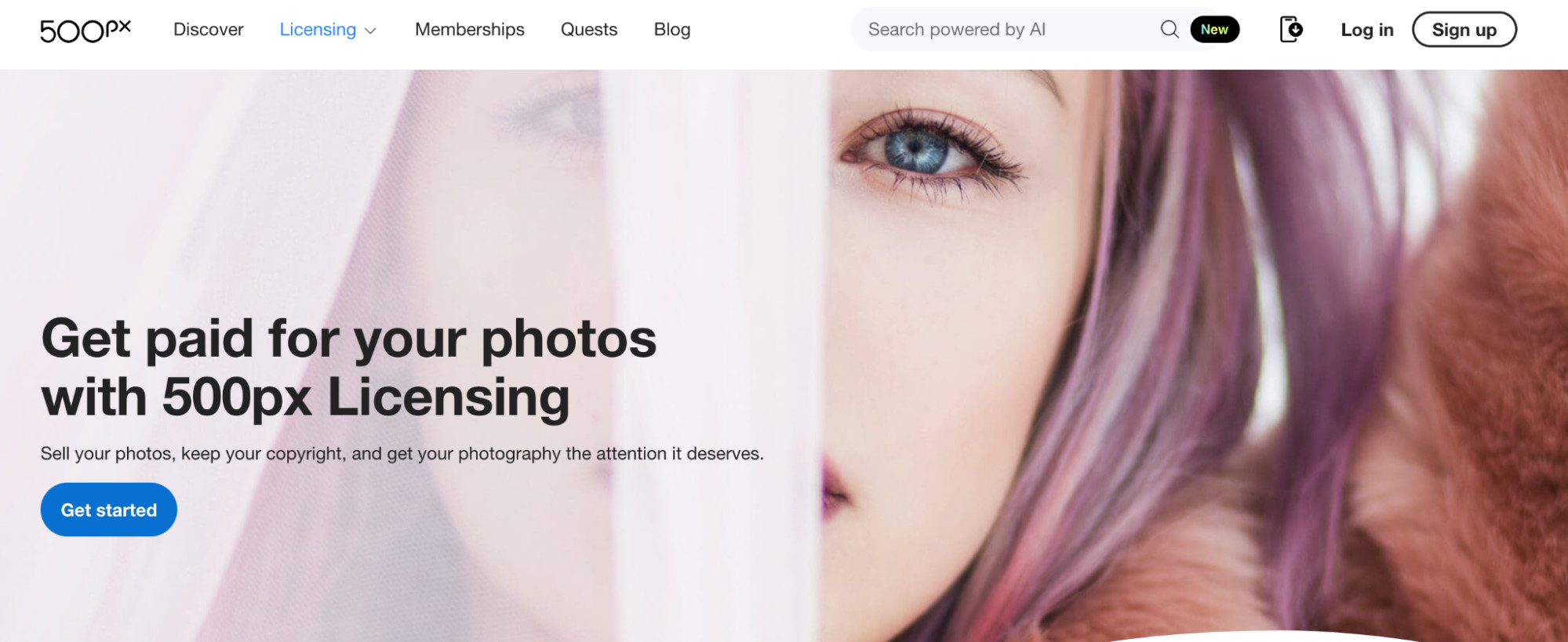 500px homepage highlighting licensing for photo monetization.
500px homepage highlighting licensing for photo monetization.
500px is a platform that blends stock photo licensing with a vibrant photographer community. It hosts millions of photographers and provides a marketplace to license and sell photos online. 500px uses its “Pulse algorithm” to promote new and emerging photographers to potential clients, offering opportunities for visibility even for those less experienced, provided their work meets the platform’s quality benchmarks.
Beyond selling, 500px fosters a strong online community. Photographers can connect, share feedback, participate in competitions, and gain exposure, making it a valuable platform for growth and networking in the photography world.
Royalty Rates
Paying members on 500px can earn up to 100% royalties, especially for exclusive content, making it a potentially high-earning platform for dedicated photographers.
3. Shutterstock
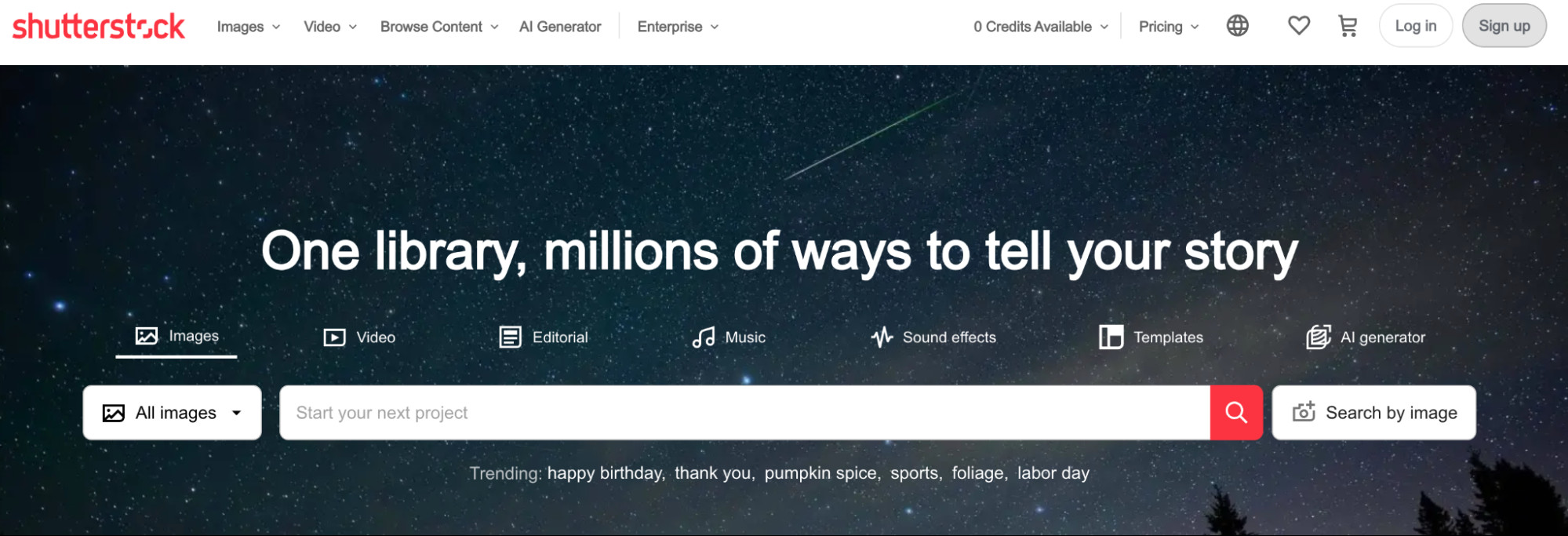 Shutterstock homepage for royalty-free images, video, and music.
Shutterstock homepage for royalty-free images, video, and music.
Shutterstock is recognized as one of the leading and most widely used stock photography websites globally. As a well-established platform, Shutterstock has a proven track record, having paid over $1 billion to its contributor community in the last 15 years.
Shutterstock operates as a micro-stock site, offering photos at competitive prices and typically under non-exclusive licenses. Success on Shutterstock often relies on contributing a large volume of images to increase download potential. While individual image earnings might be lower compared to some platforms, the high volume can lead to substantial cumulative income. It’s an excellent starting point for those new to selling stock photos and learning the market dynamics.
Payout Structure and Affiliate Program
Shutterstock’s payouts are based on cumulative earnings, with royalty rates ranging from 15% to 40%. They also feature an attractive affiliate program, offering additional income opportunities for referring new photographers or customers to the platform.
4. Getty Images
 Getty Images homepage with a search bar for photos and images.
Getty Images homepage with a search bar for photos and images.
Getty Images is synonymous with premium stock photography, attracting high-profile brands and publishers seeking exclusive, high-quality, and often hard-to-find images. Together with its microstock subsidiary, iStock, Getty Images reaches an expansive customer base of over 1.5 million worldwide.
Maintaining its premium brand image, Getty Images has stringent standards for photographers looking to contribute. The acceptance process is more selective compared to many other stock photo sites, ensuring a high level of quality and exclusivity in its collection.
Contributor Earnings
To become a Getty Images contributor, applicants need to submit a portfolio of sample photos for review. Upon acceptance, photographers can earn between 15% and 45% of the license fee for their images.
5. iStock
 iStock landing page featuring a generative AI image creator.
iStock landing page featuring a generative AI image creator.
iStock operates as a subsidiary of Getty Images, providing a more accessible entry point into the Getty ecosystem. A key differentiator from Getty Images is that iStock allows non-exclusive photo contributions. This means photographers can sell the same images on other platforms, increasing their potential for broader market reach and income streams.
Application and Commissions
Similar to Getty Images, aspiring iStock contributors must apply with a selection of their work. Commission rates range from 15% to 45%, depending on the specifics of the contributor agreement, offering a tiered system that can reward exclusivity and performance.
6. Stocksy
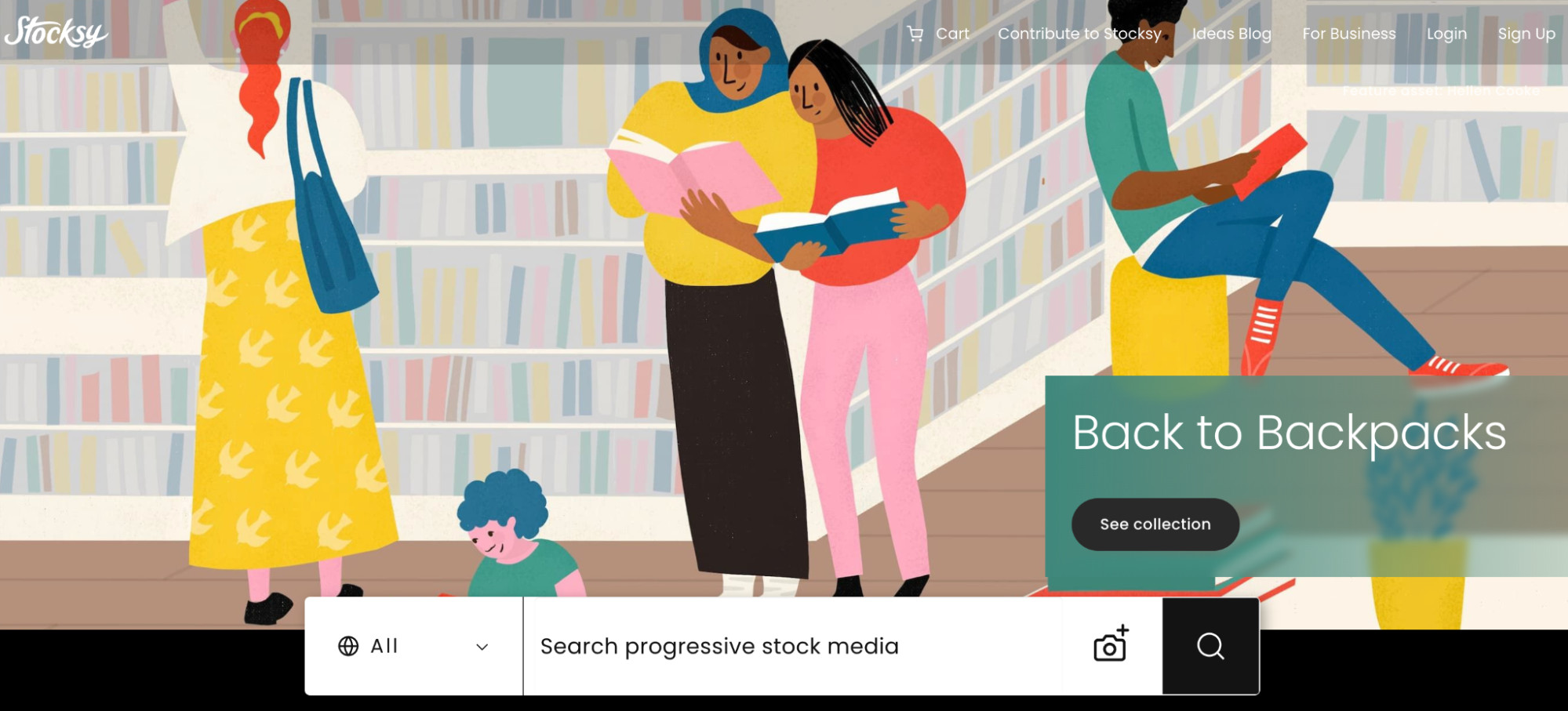 Stocksy homepage with an art graphic of people in a library.
Stocksy homepage with an art graphic of people in a library.
Stocksy is known for its curated collection of authentic and artistic stock photos and offers a welcoming environment for photographers, particularly those newer to the stock photography market. It is recognized for its higher payout rates compared to many competitors. Stocksy offers a 50% royalty for standard licenses and an impressive 75% for extended licenses. However, exclusivity is required, meaning photos sold on Stocksy cannot be offered on other platforms.
As an artist-owned cooperative, Stocksy offers contributors a unique position. They become part owners of the business, gaining a voice in its direction. When the co-op achieves a surplus, contributors may also receive profit-sharing in the form of patronage returns.
Payment Details
Stocksy pays its contributors monthly through PayPal, Payoneer, or check, with a minimum payout threshold of $100. For those interested in joining Stocksy, their contributor application FAQ provides detailed guidance on the process and requirements.
7. Picfair
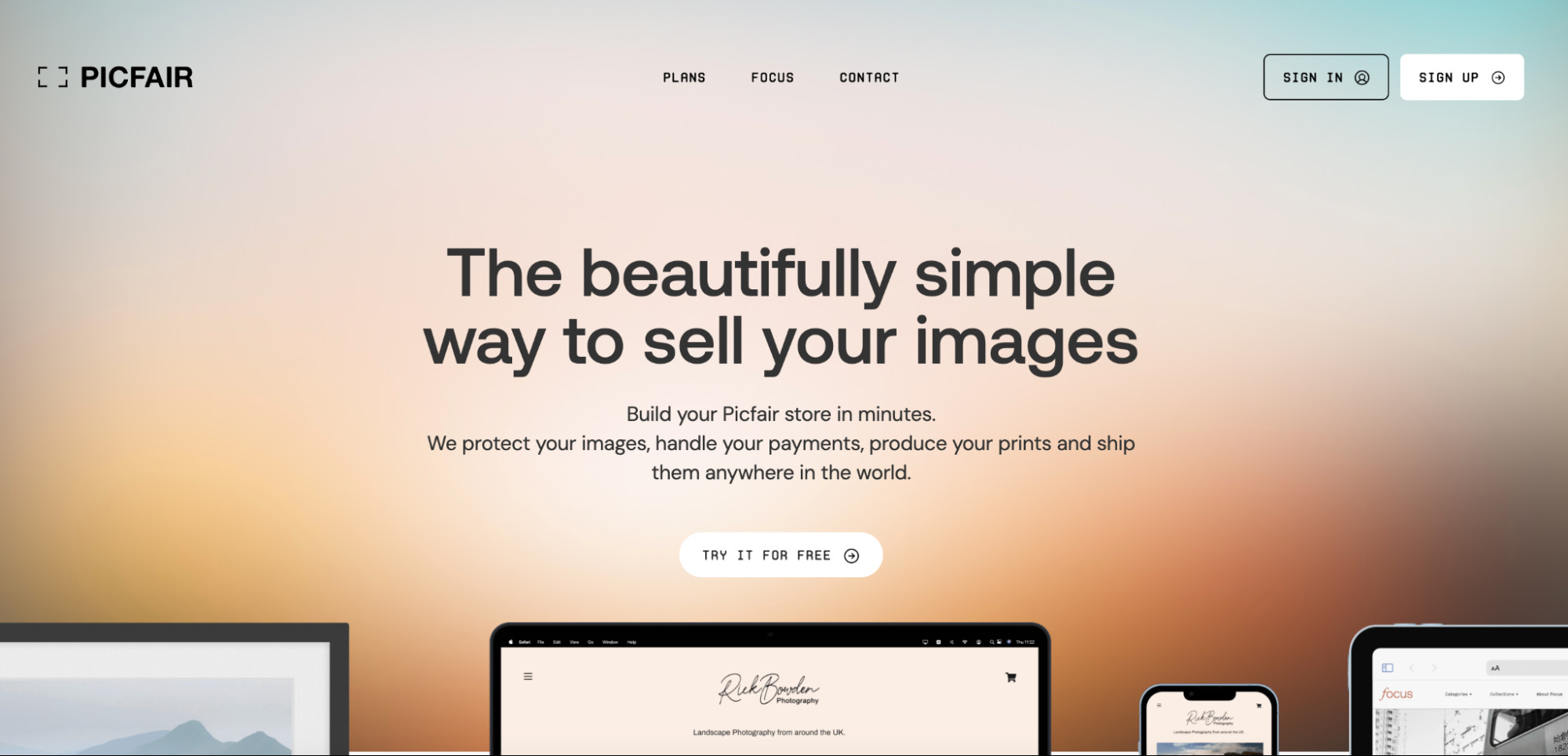 Picfair landing page for a website builder for photographers.
Picfair landing page for a website builder for photographers.
Picfair is a platform that provides photographers with greater control over their online presence and sales. It’s particularly suitable if you desire autonomy over your photo portfolio and pricing. Picfair enables you to set your own prices for both digital downloads and prints, handling the complexities of payment processing, print production, shipping, and digital image licenses.
Picfair Plus Plan
For a monthly fee (around $5 per month with annual billing for the Plus plan), Picfair allows you to create a personalized e-commerce store. This store can feature up to 10,000 images, which you can offer as prints or digital downloads, giving you a direct-to-consumer sales channel.
8. Adobe Stock
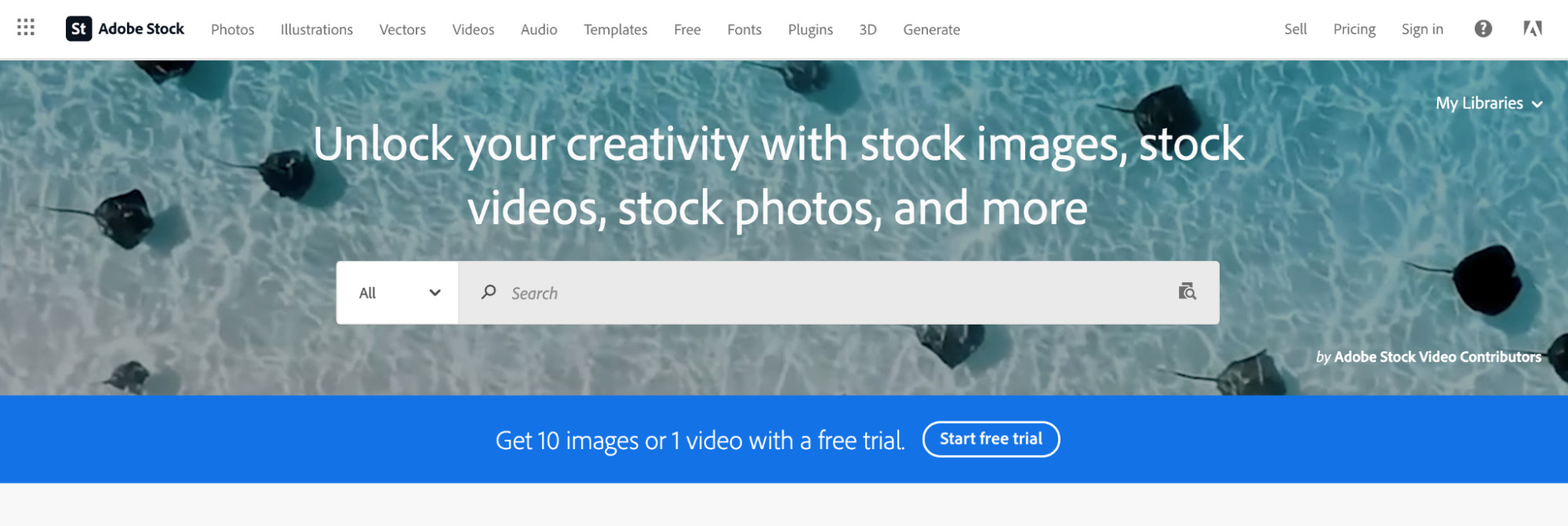 Adobe Stock homepage showing a search bar and ocean stingrays.
Adobe Stock homepage showing a search bar and ocean stingrays.
Adobe Stock is seamlessly integrated with Adobe’s suite of creative software, making it a convenient option for photographers who already use Adobe products. If you’re an Adobe Creative Cloud user, you can directly contribute your photos, videos, vectors, and illustrations to Adobe Stock.
Integration and Royalties
The integration allows for uploading assets directly from Lightroom and Bridge, streamlining the workflow. Contributors who link their Adobe ID with Adobe Stock can earn a 33% royalty on photos and 35% on videos, making it a potentially lucrative option for Adobe-centric creatives.
9. Envato Elements
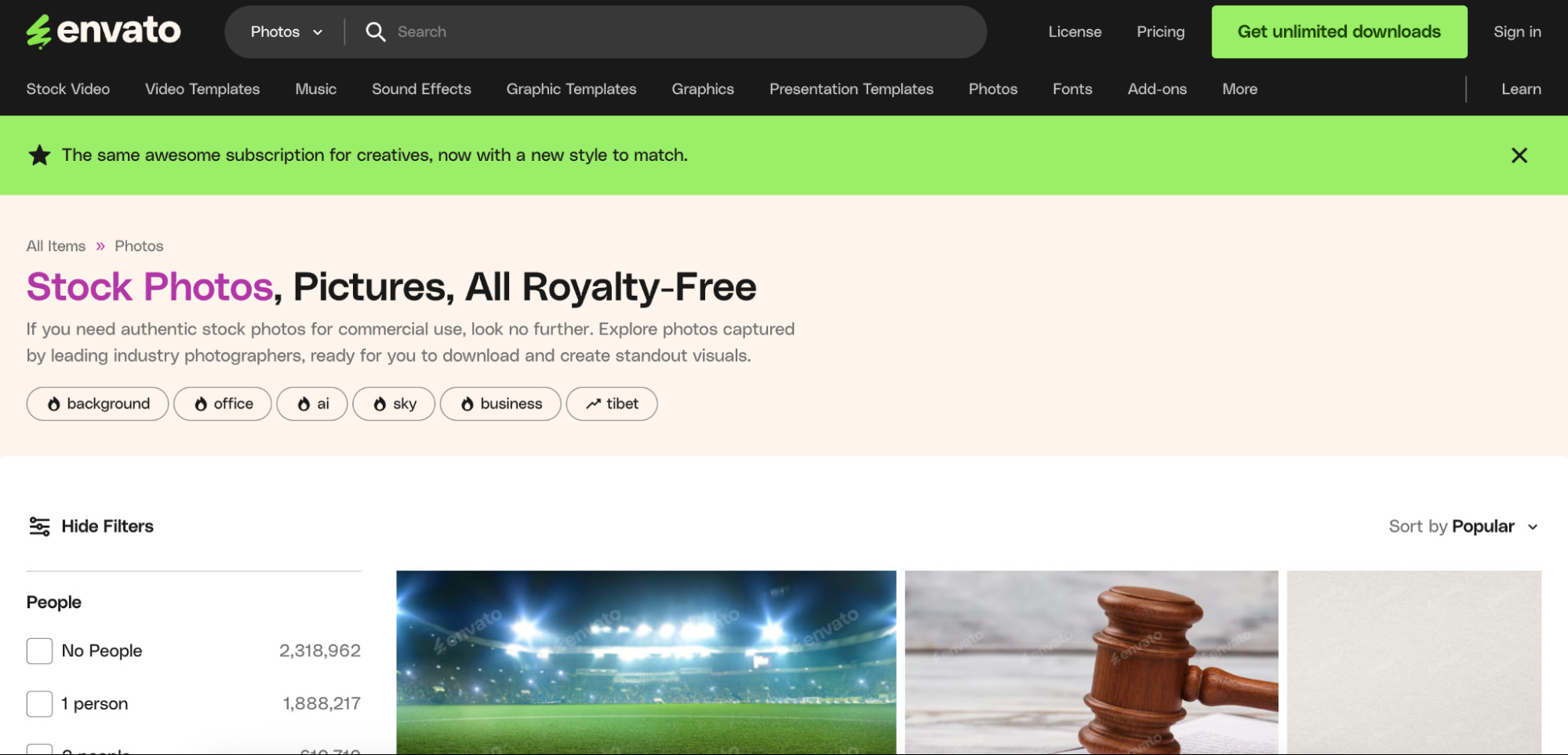 Envato Elements landing page for stock photos.
Envato Elements landing page for stock photos.
Envato Elements operates on a subscription-based model, offering a diverse range of creative assets, including stock photos. By contributing to Envato Elements, you tap into a market of subscribers who have unlimited access to download assets, providing a different revenue approach compared to per-image sales platforms.
Envato Elements provides options to sell photos through their platform or embed and sell directly from your own website using their domain, offering flexibility in sales strategy. It’s a popular avenue to sell pictures and generate income from your photography.
Revenue Sharing
Contributors to Envato Elements earn between 25% and 50% of the net subscription revenue, creating a revenue stream tied to the overall success of the platform’s subscription model.
10. Unsplash+
 Unsplash homepage with stock photos and a Unsplash call-to-action.
Unsplash homepage with stock photos and a Unsplash call-to-action.
Unsplash, known for its vast library of free stock photos, also has a premium service called Unsplash+. Unlike the free Unsplash platform, Unsplash+ offers a way for photographers to get paid for their contributions. Instead of royalties based on individual photo sales, Unsplash+ compensates photographers for submitting images that meet specific briefs and requests.
Brief-Based Contributions
To participate in Unsplash+, photographers need to apply and be accepted into their contributor program. Once approved, you gain access to customer briefs outlining the types of images needed. You can select briefs that align with your photographic style, submit relevant photos, and get paid for each image that is accepted. Payment rates typically range from $5 to $30 per image.
11. Dreamstime
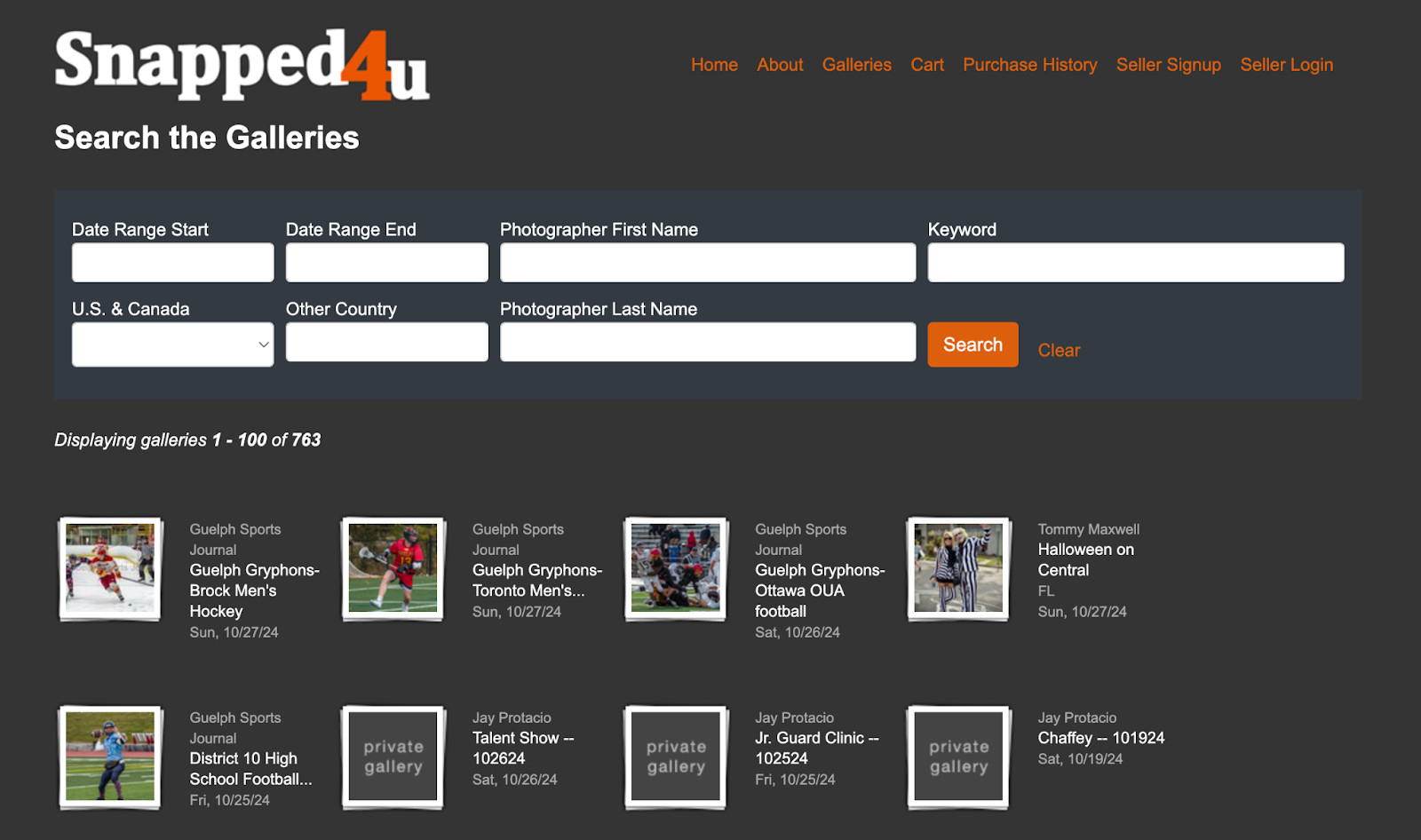 Dreamstime homepage showing photos from sports photographers
Dreamstime homepage showing photos from sports photographers
Dreamstime is a well-established microstock platform boasting a massive library of over 250 million royalty-free media files, including photos, vectors, videos, and audio. With a user base exceeding 50 million, Dreamstime offers photographers access to a large and active market for their work.
Revenue Sharing and Affiliate Program
Dreamstime provides a revenue-sharing model, offering 25% to 50% for non-exclusive content. Exclusive contributors can earn an additional 10% on their sales and also receive a bonus of 20¢ for each approved submission. Dreamstime also features an affiliate program, rewarding contributors with 10% of the transaction value for each new contributor or customer they refer to the platform.
12. Snapped4U
 Foap creator landing page promoting a mobile app for photographers
Foap creator landing page promoting a mobile app for photographers
Snapped4U is a niche marketplace specifically designed for portrait and event photographers. It provides a platform to create personalized galleries, set custom prices (up to $20 per image), and directly sell digital files to clients.
Snapped4U is tailored for photographers selling directly to clients from events or portrait sessions. It’s not designed for general stock photography like landscapes or still-life images.
Fees and Payments
Snapped4U charges a one-time registration fee of $10 upon signup and takes a commission of 10% to 12% on sales. Photographers receive their earnings via PayPal on the 1st and 15th of each month, based on the balance in their account.
13. Foap
 Foap creator landing page promoting a mobile app for photographers
Foap creator landing page promoting a mobile app for photographers
Foap connects photographers directly with brands and agencies seeking authentic, commercial-quality images. Photographers on Foap can participate in “missions,” where brands outline specific photo or video needs and offer rewards to the selected creators. Foap has paid out over $3 million to its community of creators.
Missions and Market Sales
Mission payouts on Foap range from $100 to $2,000, offering significant earning potential for successful submissions. Photographers can also sell individual photos in the Foap market. Foap retains a 50% commission on all sales, whether through missions or direct marketplace sales.
14. EyeEm
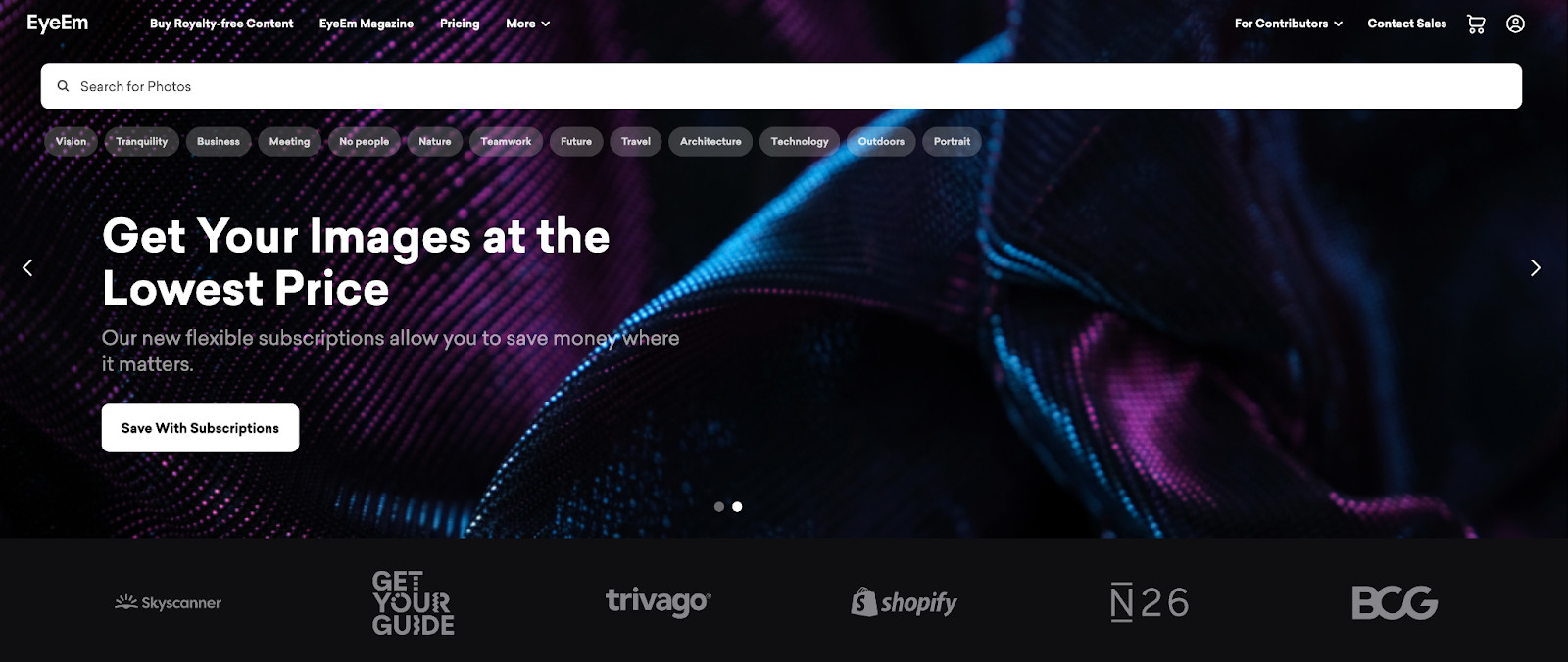 EyeEm homepage with a search bar and high-profile client examples
EyeEm homepage with a search bar and high-profile client examples
EyeEm combines a photography community with a stock photo marketplace. It encourages photographers to participate in “missions,” which are themed calls for images from brands and agencies. EyeEm provides a platform to gain exposure, connect with other photographers, and sell your work.
Commissions and Payment Method
Contributors to EyeEm earn a 50% commission on each photo licensed through the EyeEm marketplace. Payments are processed via PayPal, offering a straightforward payment method for photographers worldwide.
15. Pond5 (for Videos)
 Pond5 homepage
Pond5 homepage
Pond5 specializes in video content, catering to a clientele that includes major brands like the BBC and Disney. While this list primarily focuses on photos, Pond5 is a leading marketplace for royalty-free videos, music, sound effects, and other media assets. It’s a go-to platform for brands and media producers seeking high-quality video content for commercials, TV shows, and films.
Royalties and Artist Portal
Video artists on Pond5 earn a 40% royalty share, with an option to increase earnings up to 60% by offering content exclusively through their platform. Pond5 provides an Artist Portal where contributors can respond to client briefs and manage their storefronts. They also offer a referral program to further augment income.
Essential Tips for Succeeding in Selling Photos Online
To build a thriving stock photo business, consider these key strategies:
Define Your Photography Niche
Developing a consistent style and focusing on a specific theme can significantly enhance your appeal in the stock photography market. Whether your passion is travel, fashion, nature, or culinary photography, consistency helps establish your brand and attract buyers looking for specific styles.
Finding your niche often involves exploring subjects you enjoy shooting that also resonate with market demand. Keyword research tools can help assess the popularity of different photo topics, while Google Trends can provide insights into trending image categories.
Leverage Instagram for Exposure
Similar to other online content creators, photographers should utilize social media platforms to build an audience. Instagram, as a visually driven platform, is particularly effective for reaching potential clients and gaining visibility.
Utilize Instagram tools to engage with relevant accounts, use popular hashtags, and cultivate a following interested in your photographic style. Linking your social media accounts can streamline content sharing across platforms, increasing your reach and saving time. For instance, Instagram’s linking feature allows simultaneous posting to Facebook, enhancing your social media efficiency.
Integrate Ecommerce on Your Website
Most professional photographers maintain a website to showcase their portfolio to potential clients. By incorporating e-commerce functionality, such as Shopify’s Buy Button, you can directly sell stock images from your site.
Photographers like Dave Sandford exemplify this approach, using their websites to display their work and sell prints and other merchandise.
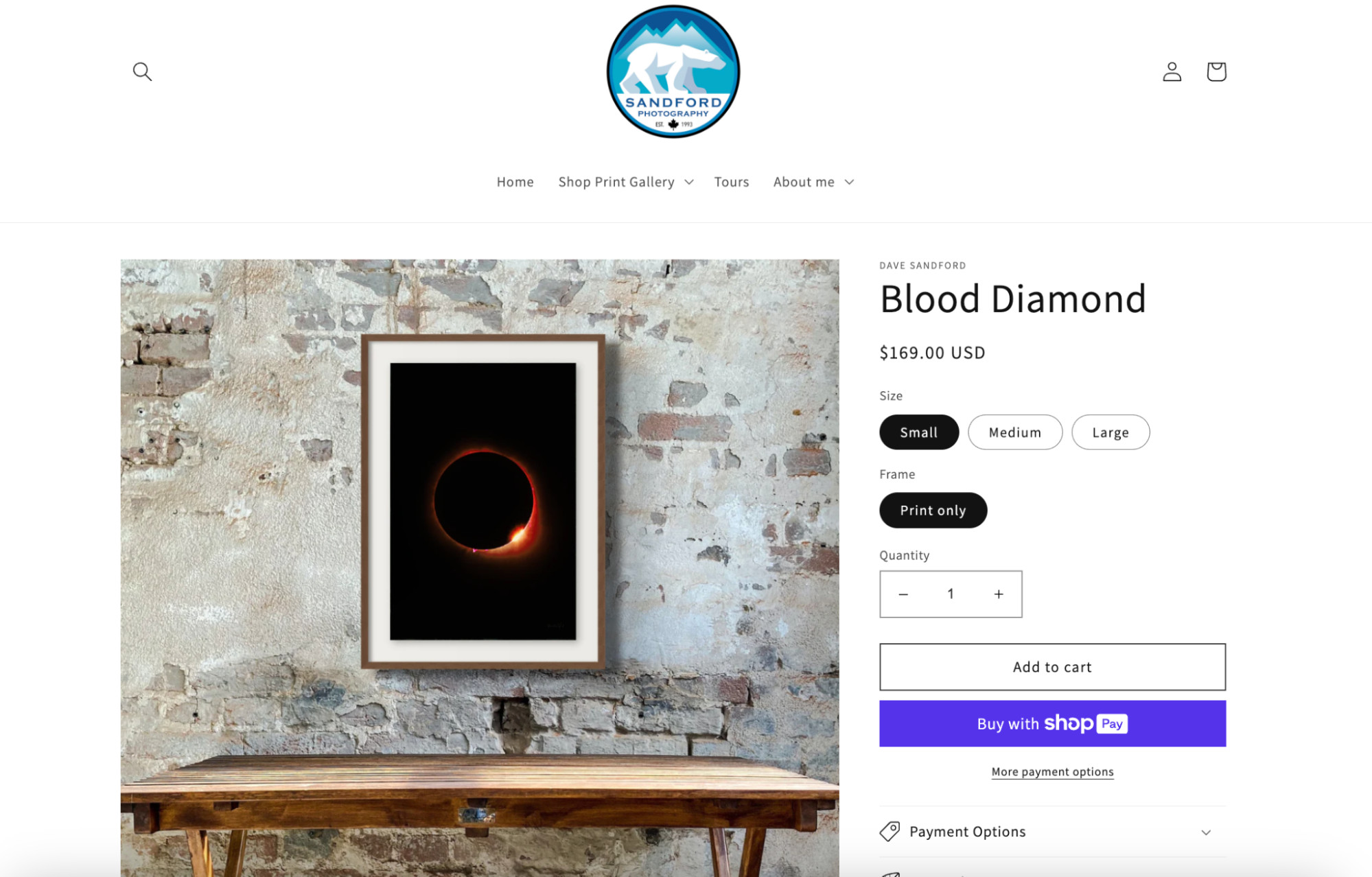 Product page for a moon print with a red border, example of ecommerce photography.
Product page for a moon print with a red border, example of ecommerce photography.
Creating a personalized portfolio or store on platforms like Shopify is a straightforward way to sell photos directly. Using pre-designed themes tailored for art and photography can simplify the process of setting up your online showroom. Alternatively, combining a free theme with a gallery app offers a customizable and cost-effective solution.
Understand Your Target Market
Identifying your target market is crucial for creating photos that sell. Knowing who is most likely to purchase your images—their interests, needs, and buying habits—allows you to tailor your photography to meet market demands.
For example, if you specialize in wedding photography, your target market for stock photos isn’t necessarily engaged couples. Instead, it’s often businesses within the wedding industry, such as stationery designers or suit retailers, who need stock images for their marketing materials. By understanding this buyer persona, you can create images that cater to their specific needs and preferences, increasing your sales potential on stock photo platforms.
Setting Up Your Online Photography Portfolio: A Step-by-Step Guide
Follow these steps to create an effective online portfolio to showcase and sell your photography:
1. Choose the Right Platform
The “best” platform depends on your business goals and desired level of control. Consider these options:
- For Hobbyists or Passive Income Seekers: Stock photo submission sites like iStock or Alamy are ideal for casual uploads and generating supplementary income.
- For Brand Assignments Without Direct Pitching: Unsplash+ offers a way to receive assignments from brands without proactive pitching.
- For Full Control Over Your Photography Business: E-commerce platforms like Shopify provide complete control over branding, sales, and customer relationships.
2. Plan Your Portfolio’s Structure
Your portfolio serves as your visual resume. Key elements include:
- Layout: Photos should be prominent, but include brief descriptions to provide context and improve SEO.
- Social Proof: Incorporate testimonials or examples of how your photos have been used to build credibility.
- Categories and Organization: Use tags and categories to help clients easily browse your work. For nature photography, categorize by location, environment, subject, and date.
- Gallery Size: Curate your portfolio to showcase only your best, high-quality images. Eliminate any photos you’re not fully satisfied with to maintain a strong impression.
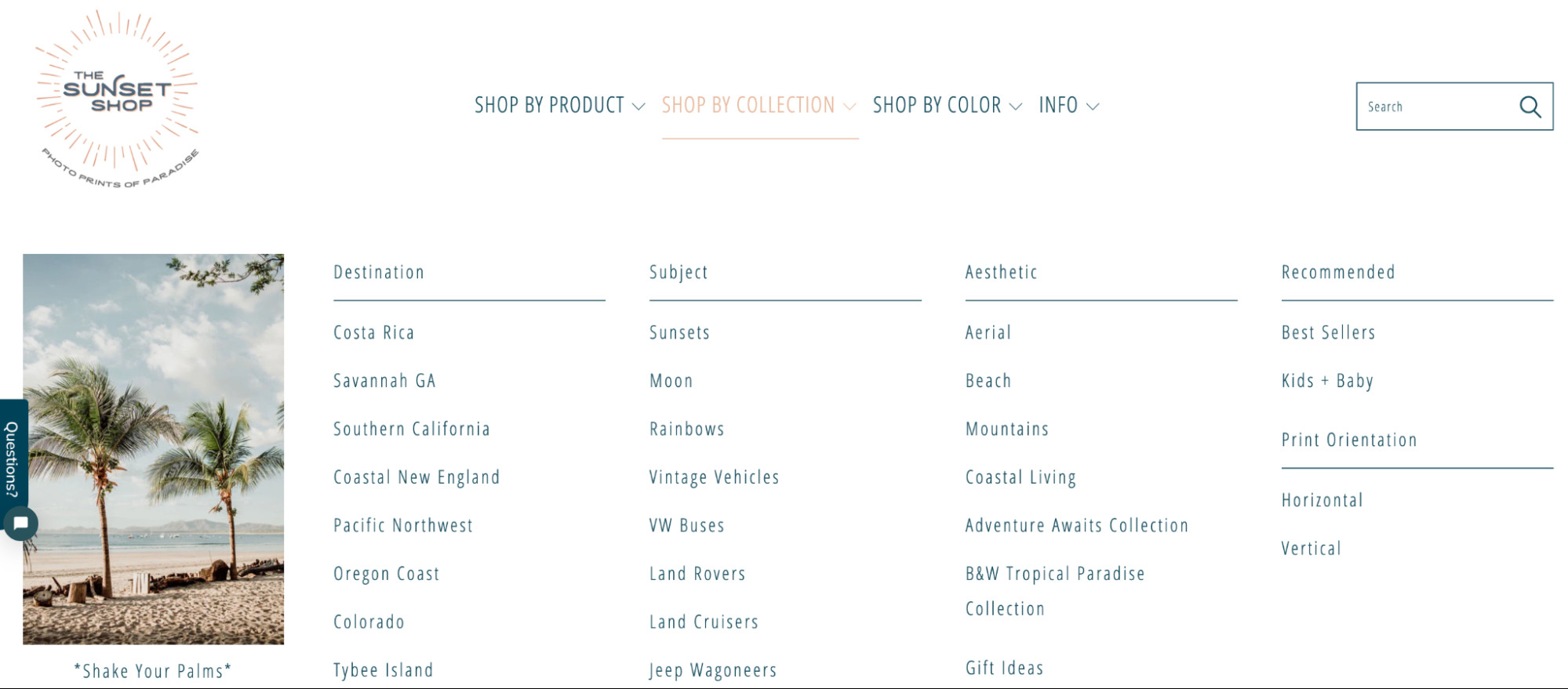 Example product categories on a photo print website, including “Costa Rica”, “Sunset”, and “Mountains”.
Example product categories on a photo print website, including “Costa Rica”, “Sunset”, and “Mountains”.
3. Optimize Images for the Web
Fast-loading images are crucial for user experience. Optimize your images by:
- Compressing Image Sizes: Reduce file sizes to 60%-80% compression to balance quality and load speed.
- Using Descriptive File Names: Name files descriptively, e.g., “summer-evening-nature.jpg” instead of “IMG_3542.jpg.”
- Writing Alt Text: Add descriptive alt text to images for SEO and accessibility, describing what the photo is about for search engines and screen readers.
4. Create an Engaging About Page
Personalize your portfolio with an About page to connect with potential clients. Share your story, passion for photography, and inspiration. This builds trust and helps clients understand your unique perspective and brand.
5. Implement Ecommerce Functionality
Choose an e-commerce platform to handle the logistics of selling photos online. Shopify, for example, facilitates:
- Creating an online storefront.
- Setting up social media shops.
- Processing payments and taxes.
- Managing digital or physical product delivery.
- Running marketing campaigns.
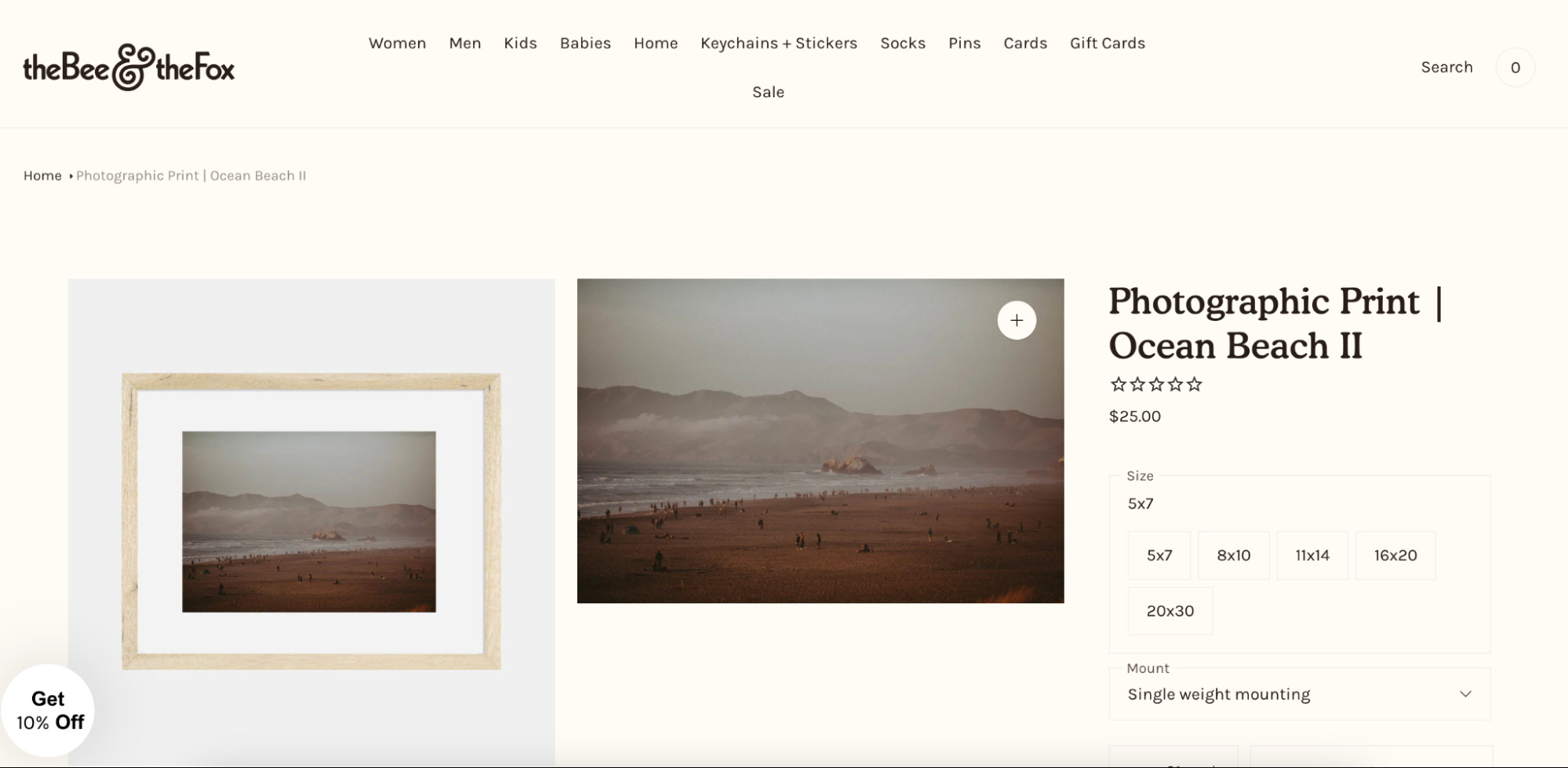 Product page for a 5×7 beach photo print on The Bee & The Fox Shopify store.
Product page for a 5×7 beach photo print on The Bee & The Fox Shopify store.
6. Ensure Mobile Compatibility
Optimize your portfolio for mobile devices. With over half of web traffic coming from mobile, ensure your site is responsive, loads quickly on mobile, and has finger-friendly navigation.
7. Launch and Promote Your Photos
Share your portfolio using various marketing tactics:
- Repost images on social media platforms.
- Use Pinterest to drive traffic back to your site.
- Offer free prints to influencers for promotion.
- Create behind-the-scenes content on platforms like TikTok, YouTube, and Instagram Reels.
- Build an email list by offering discounts to website visitors.
Selling Photos as Prints and Photo Books
Expand your revenue streams by selling physical products featuring your photography:
Selling Prints and Physical Products
You can sell photos as prints, mugs, t-shirts, and more. Consider using local photo labs for printing and shipping or print-on-demand services for dropshipping a variety of products. Always order samples to ensure product quality aligns with your photographic standards.
Creating and Selling Photo Books
Photo books offer another avenue to sell your photography. Niche and consistent photography styles are ideal for creating compelling photo books around specific themes. Print-on-demand services provide a low-risk way to test demand before investing in larger print runs.
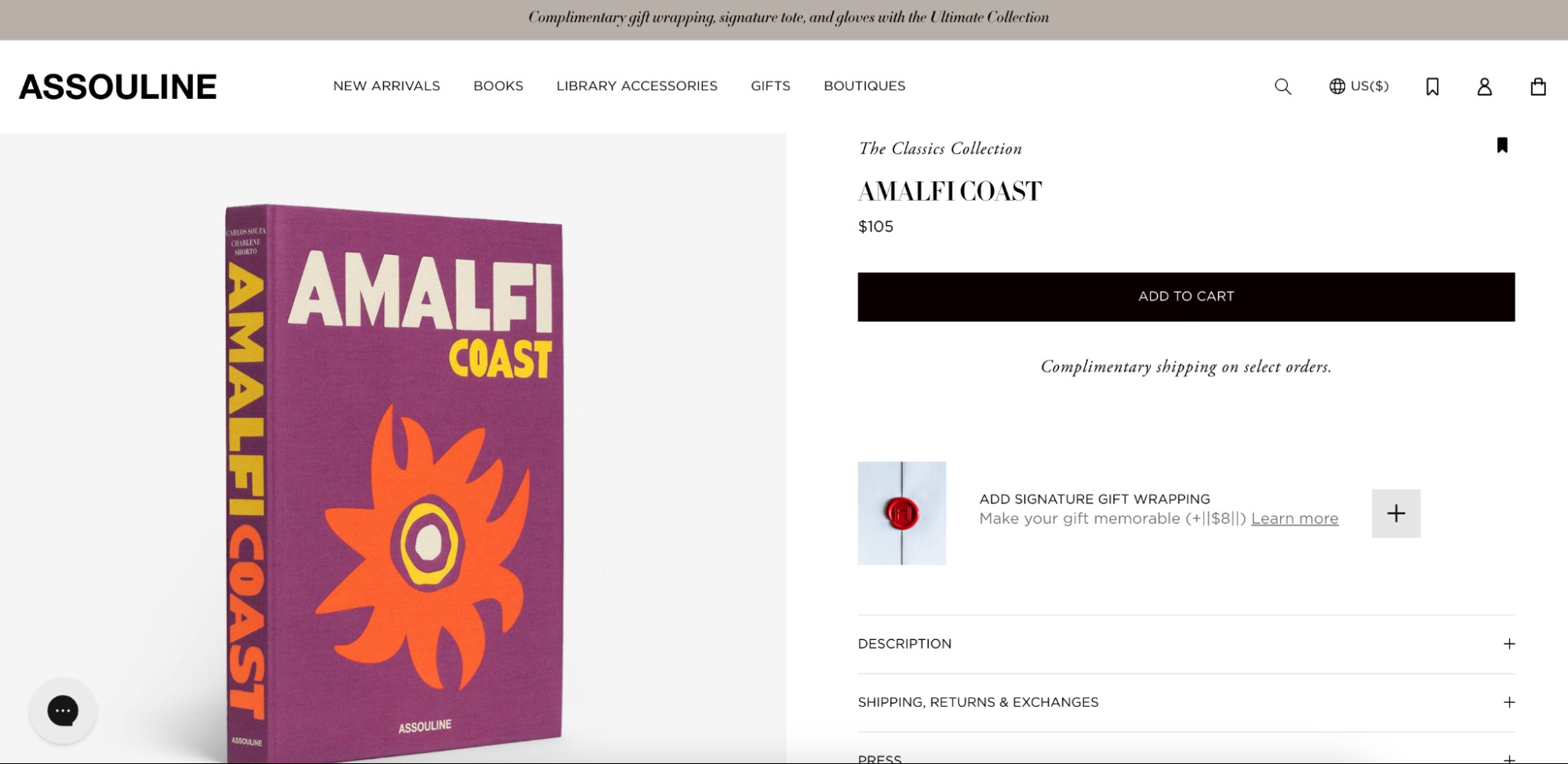 Photobook of images from the Amalfi Coast by Assouline.
Photobook of images from the Amalfi Coast by Assouline.
Selling Your Photography Services
Offer your photography skills as a service for events, fashion shoots, product photography, and more. Freelance platforms like Fiverr and Upwork can connect you with clients, but also consider local networking and video meetings.
Networking Tips:
- Carry business cards.
- Optimize your LinkedIn profile.
- Attend industry networking events.
- Build a strong personal brand on social media.
Use booking platforms like Setmore or SimplyBook.me, or scheduling apps on Shopify, to manage client bookings and appointments efficiently.
Pricing Strategies for Online Photo Sales
Your pricing strategy significantly impacts your earnings. Consider these factors:
- Market Research: Research competitor pricing and ask your target market about their willingness to pay.
- Profit Margins: Calculate your costs (equipment, website, marketing) to ensure profitable pricing.
- Usage Rights: Price exclusive rights higher than non-exclusive licenses.
- Discounts and Promotions: Use discounts to attract new customers and reward loyal ones.
- Product Bundles: Offer themed photo bundles at a discounted price to increase sales volume.
Legal Basics for Selling Photos Online
Understanding legal terms is crucial for protecting your rights:
Glossary of Key Legal Terms
- Editorial Use: For blogs, news, magazines.
- Commercial Use: For marketing and advertising.
- Retail Use: For physical products for sale.
- Exclusive Use: Only the licensee can use the photo.
- Non-Exclusive Use: Multiple licenses can be sold for the same photo.
- Public Domain: No copyright restrictions, free use.
- Creative Commons: Conditional usage, often requiring attribution.
- Royalty-Free: Unlimited use with a one-time license fee.
- Rights-Managed: License for specific use, additional uses require new licenses.
- Right of Publicity: Rights of individuals in photos, especially for commercial use; requires model releases.
Handling Photo Theft
Watermark your digital images to deter theft. If theft occurs:
- Send a cease and desist notice.
- Issue an invoice for unauthorized use.
- Request attribution even for editorial use to gain backlinks and SEO benefits.
How to Sell Photos Online FAQ
What is the most effective way to sell photographs?
Selling stock images on third-party platforms like iStock, Shutterstock, and Alamy is efficient, easy, and cost-effective.
Where are the best places to sell photos online for income?
- Alamy
- 500px
- Shutterstock
- Getty Images
- iStock
- Stocksy
- Picfair
- Adobe Stock
- Envato Elements
- Unsplash+
How is money earned through stock photography?
Stock photography websites license your uploaded images to clients for a fee, and you receive a royalty payment for each license sold.
Conclusion
Selling photos online presents a significant opportunity for photographers to monetize their passion and skills. By leveraging the right platforms, understanding market dynamics, and implementing effective sales and marketing strategies, you can build a successful online photography business. Whether you choose to sell stock photos, prints, photo books, or photography services, the digital marketplace offers diverse avenues to reach customers and generate income from your photographic talents.
